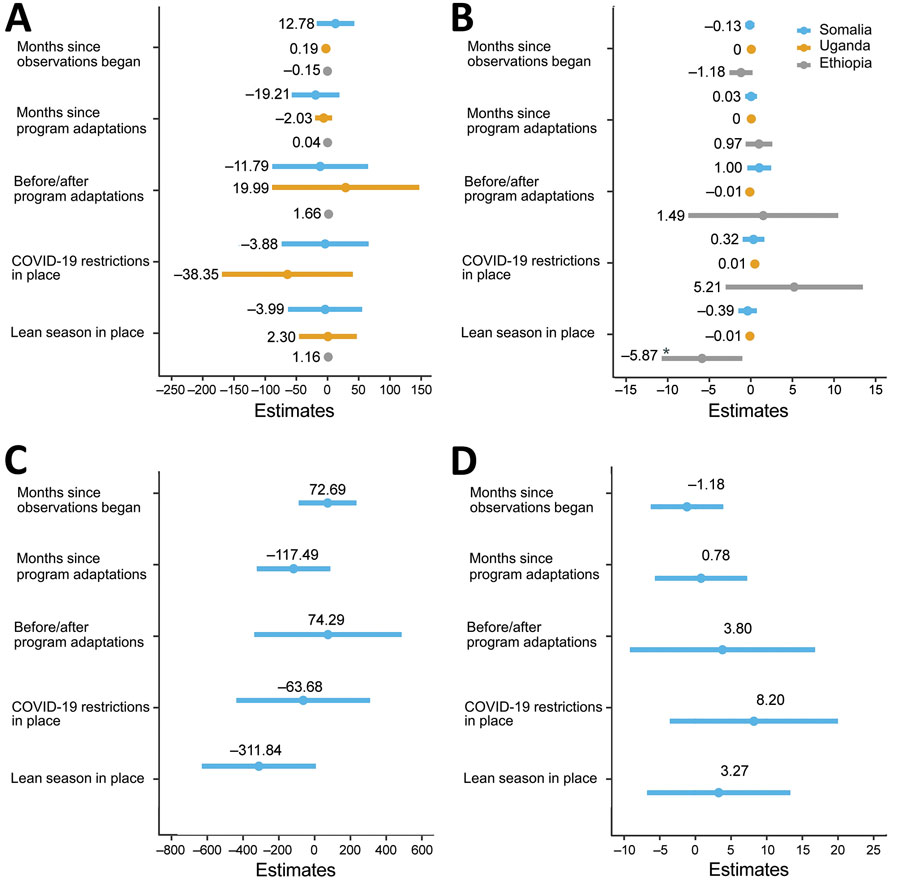Volume 28, Supplement—December 2022
SUPPLEMENT ISSUE
Clinical
Outcomes after Acute Malnutrition Program Adaptations to COVID-19, Uganda, Ethiopia, and Somalia
Figure 1

Figure 1. Summary and comparison of facility-level interrupted time series models used in study of outcomes after acute malnutrition programs were adapted for COVID-19 in 3 countries, showing the absolute difference in average total admissions (A), aggregate cure rate (B), average total screened (C), and average length of stay (D) in 12 Somalia outpatient therapeutic facilities, 5 Uganda targeted supplementary feeding program facilities, and 81 Ethiopia outpatient therapeutic program facilities attributed to immediate and long-term effects of program adaptations, lean seasons, and COVID-19 lockdowns. Circles (data markers) and lines indicate point estimates and 95% CIs. Point estimates are labeled, and the asterisk indicates fixed effects with statistically significant results (p<0.05). Total screened and average length of stay was analyzed for Somalia only. COVID-19 restrictions in place refers to COVID-19 mitigation policies that restrict movement, including restrictions on transportation, lockdowns, and curfews. Lean seasons refer to months of increased food insecurity. Time frame analyzed varies by country.